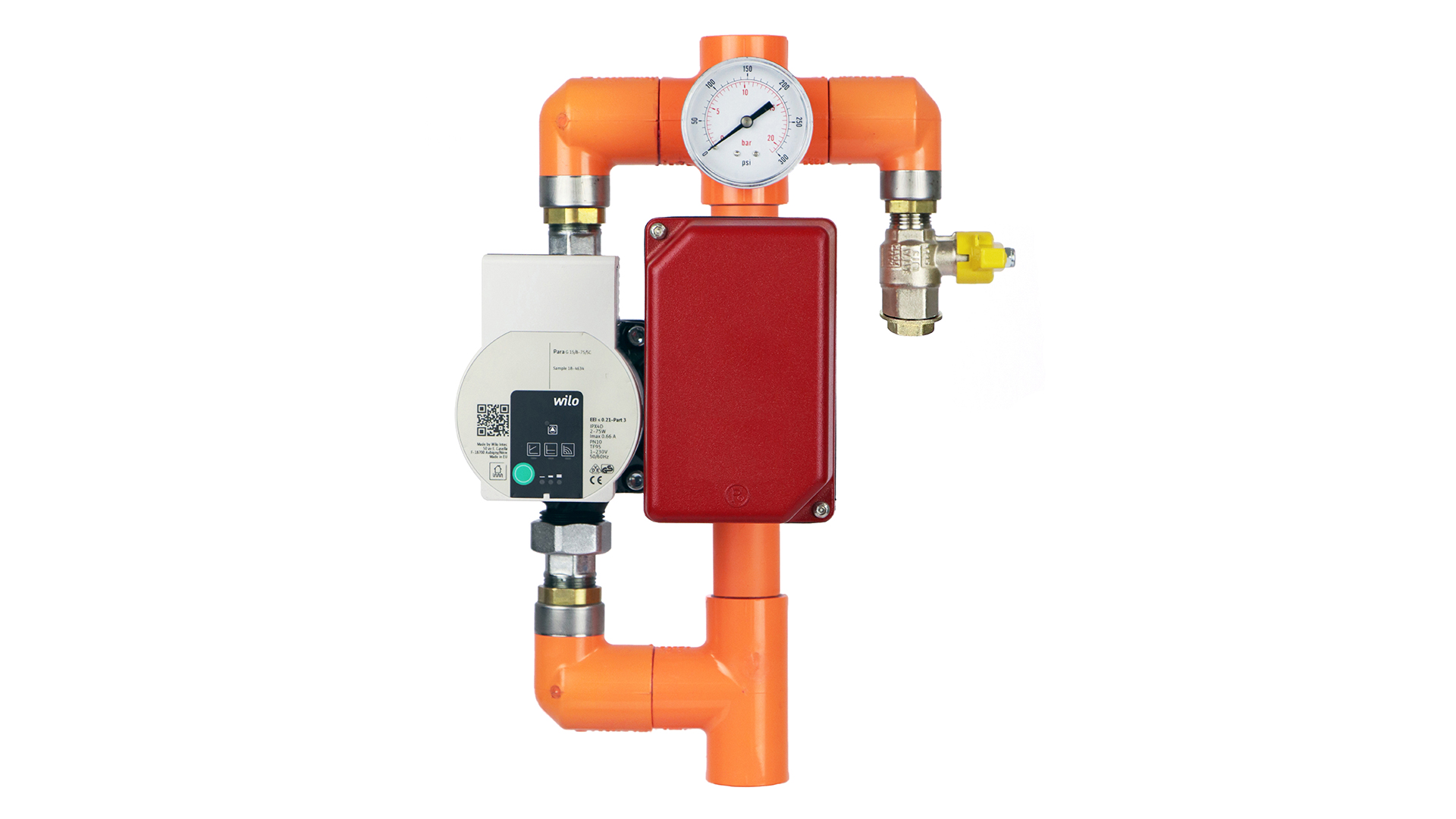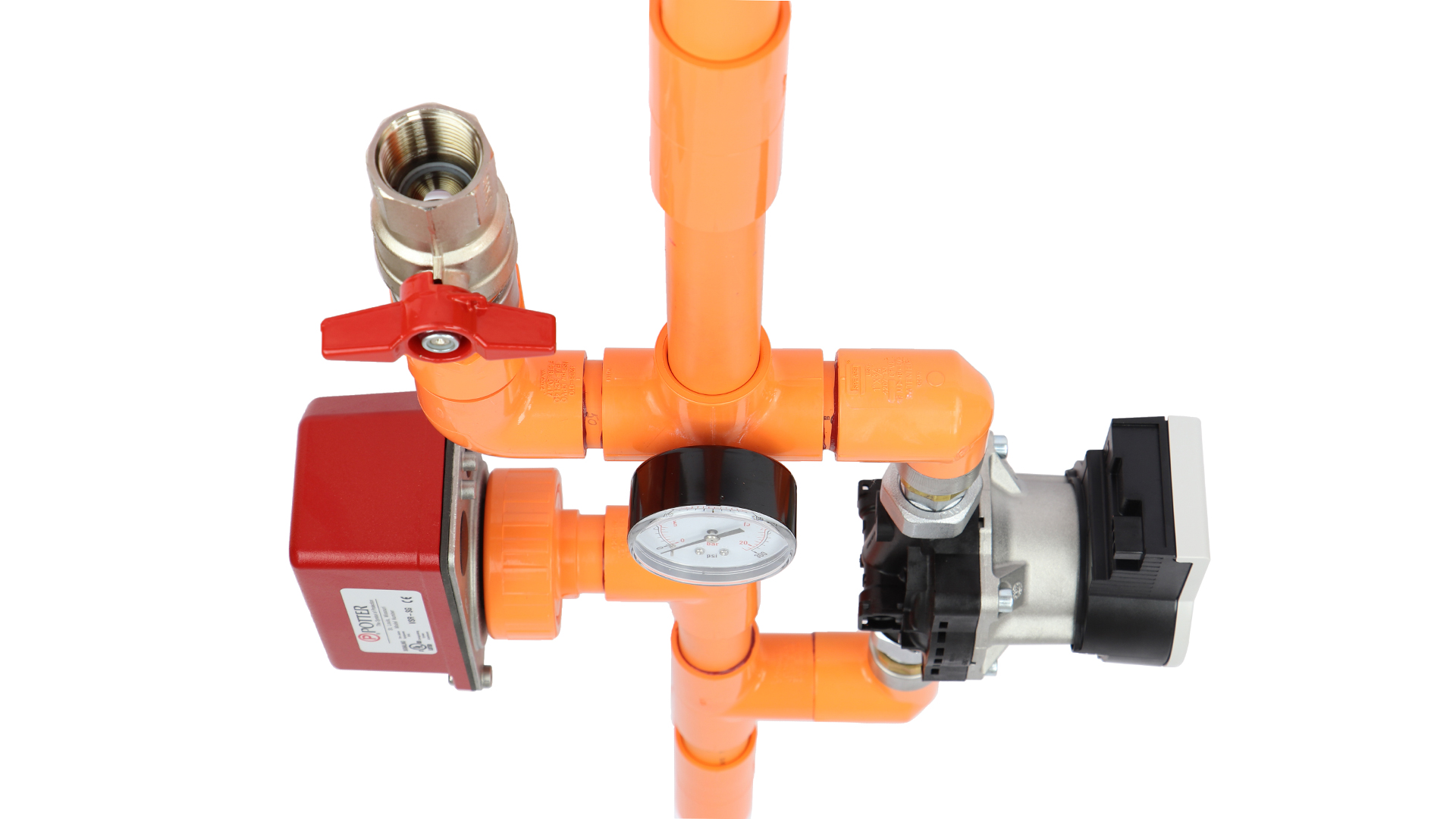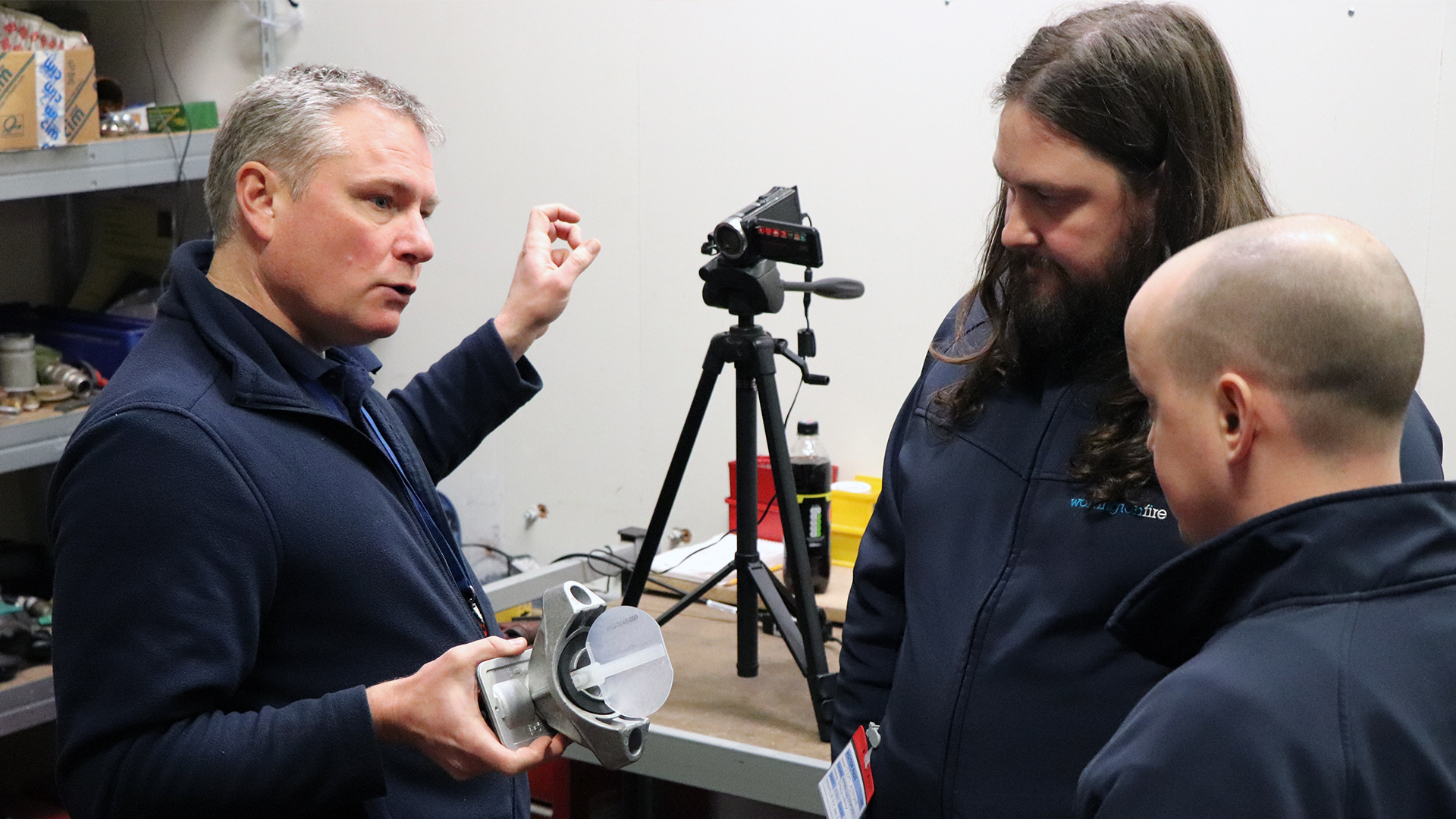“Traditionally, testing can prove difficult, is labour intensive, and wastes large amounts of water and energy in the process. Innovative fire safety product manufacturer Project Fire Products Ltd has changed all of that with its Zonecheck system, which now includes a compact, low-cost residential version.”
Automatic fire sprinkler systems require routine testing to prove that the system remains ‘fit for purpose’. Traditionally, testing can prove difficult, is labour intensive, and wastes large amounts of water and energy in the process. Innovative fire safety product manufacturer Project Fire Products Ltd has changed all of that with its Zonecheck system, which now includes a compact, low-cost residential version. As a manufacturer that prides itself on quality and reliability and to assure customers that this newly developed solution would work as designed under all possible configurations, they called in the help of accredited testing, inspection and certification body Warringtonfire.
In fire sprinkler systems, the fire alarm is triggered by a piece of equipment known as a flow-switch. This is usually a hinged paddle inside the sprinkler system pipework. When the sprinkler head activates, water flows. The force of the moving water pushes the paddle, activating a switch that then sends an electrical signal to activate the alarm. Without it, occupants (who, in residential buildings, might be asleep) would not necessarily know to evacuate, and the delayed response might mean that the fire and rescue service loses valuable time.
Clearly, these flow-switches are critical to the functioning of the system. However, because they rely on mechanical operation, they are vulnerable to problems arising through wear and tear, corrosion, damage inflicted from the outside, or because of some obstruction inside the pipe. Confirming their ability to work cannot be left until an emergency: they must be tested regularly before then. Indeed, in blocks of flats or student accommodation or care homes, for example, regular testing is mandatory in England and Wales under the Regulatory Reform (Fire Safety Order) and equivalent legislation in Scotland and Northern Ireland.
The problem is that in traditional systems, the testing process is time-consuming, messy, disruptive, costly, and wastes large amounts of water. To simulate the sprinkler head activating, engineers open a downstream valve to let water flow, usually to a purpose-built drain or through a hose leading to a convenient toilet or water container, for example, to confirm that the flow-switch is operational. Since sprinkler systems usually have one flow-switch per zone (which could be a flat, a storey, or common area in an apartment block, for example) then the engineers might find themselves having to organise dozens of tests in a single building at gross inconvenience to tenants, considerable time and effort to themselves, and all at significant expense to the landlords.
The Zonecheck Residential system allows flow-switches to be tested without wasting any water. The test signal starts the small pump that sends water already in the system around a loop of CPVC pipe past the flow-switch, simulating the activation of a sprinkler head.
On top of that, each test wastes up to 100 litres of drinking water. Multiply that by the number of flow-switches and by the number of tests needed per year to satisfy the fire risk assessment, and the scale of the waste quickly becomes apparent. At a time of climate change emergency and environmental resource depletion, this profligacy is unwarranted.
At least, it seemed that way to Project Fire, whose family of products collectively called Zonecheck already solved precisely this problem for sprinkler systems designed for commercial properties where there has traditionally been a much keener interest in fire sprinkler systems than in the residential sector.
Spurred by the consequences of the tragic Grenfell Tower fire, that difference disappeared. Project Fire realised that even if the regulations for residential properties didn’t change in England (as they had already done in Wales and, much later, in Scotland), insurers would adjust their risk factors to incentivise the installation of fire sprinklers.
David Disbury is in charge of developing new product lines at Project Fire. He was in no doubt: “The national mood had changed. People now wanted to install sprinklers in new residential properties. If they were going to benefit from our technology, we had to respond.”
Project Fire’s existing Zonecheck solution for commercial properties consists of a closed loop of galvanised steel pipe around the flow-switch that, with a small pump, makes it possible to simulate a sprinkler head activation without wasting a single drop of water. Needless to say, its various component parts are, where standards exist, third-party certified to make code compliance easy and to give consultants the quality assurance they need to specify them with confidence.
However, it was not designed for the residential market, where profit margins are tighter and where gross internal area is at a premium. Project Fire set about ways to make the existing product more compact and affordable, quickly developing a new range – Zonecheck Residential.
The new range comprises two compact pipe configurations – void and riser – with several options, including a variety of pipe diameters, two pipe materials – CPVC and galvanised steel, and two testing modes – mini-switch and addressable. As the names suggest, the configurations anticipate installation in residential risers or ceiling voids. By cleverly narrowing or flattening the ensemble of components, Project Fire was able to meet the residential sector’s particular market need to maximise space.
The slimline ‘void’ configuration of Zonecheck Residential is, as the name suggests, designed for very shallow ceiling voids in new build residential blocks.
All versions of Zonecheck Residential save water, already a huge advantage. However, the full facilities management benefits come with the addressable technology. Integrating seamlessly with fire alarm systems or building management systems, allowing flow-switches to be monitored and tested automatically. As well as proving compliance with fire codes, the system saves on ongoing maintenance costs and mitigates the risk that the flow-switches might have stopped working. “The beauty is that you no longer have to send engineers around the building to carryout flow-switch testing, interrupting tenants and wasting water. It performs silently and safely in the background, and saves you money,” says Disbury.
Without human intervention, the addressable version runs tests monthly, logs the test results, pinpoints faulty flow-switches, and notifies maintenance crews. Disbury again: “It has double-point failure resilience and silences the alarm system during the test. Overall, automating the process improves the speed and efficiency of regulatory compliance.”
With working prototypes developed, Project Fire knew that the market and its insurers would look for third-party verification that the system would work as designed. They did not hesitate to approach Warringtonfire for help. As a highly respected, globally recognized accredited testing and certification body with expertise in fire safety, they were the natural choice.
Engineers from Warringtonfire oversaw the bespoke testing of the whole Zonecheck Residential product range, providing Project Fire with third-party ‘ad hoc’ product test verification.
Collaborating on the best way forward in the absence of any formal test standard, the two parties swiftly agreed a schedule of three tests. The first was a hydraulic test to demonstrate that all configurations could withstand 10 bars of pressure. They could, and in fact Project Fire has successfully tested it up to 28 bar, although this has not been independently verified. The second was to check that the flow-switch test functioned in all configurations and for all conditions. It did. The third and final test checked against false alarms. Once again, all configurations were within acceptable tolerances.
The product range launched in June 2019 and is already attracting interest around the UK, kicking off with a large order for a 110-unit newbuild residental block in central London. As Disbury says, “The route to market has been remarkably smooth, helped in no small measure by the technical support we received from Warringtonfire”.


